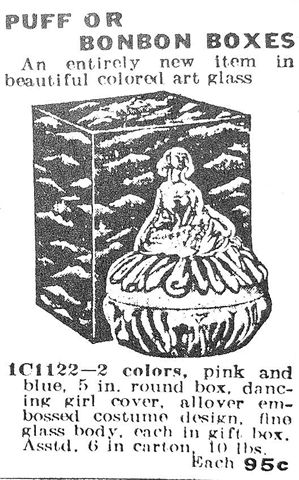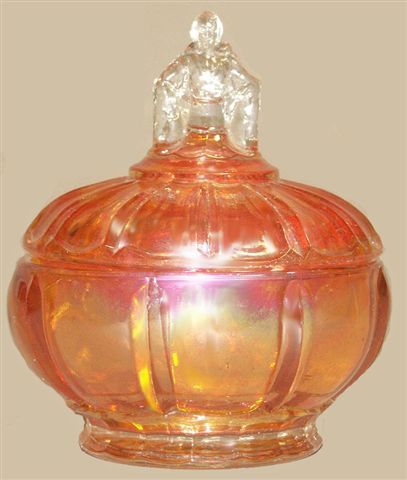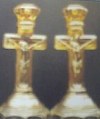Carnival Glass 101 | home Quick Reference to Carnival Glass Patterns on This Site
Puff Boxes - Part 1
PUFF BOXES - Part 1
Alan & Lorraine Pickup wrote about this piece in the mid `90s with superlatives which make it clear that at least three manufacturers were busy producing them in copycat fashion. Fenton and Northwood even used the same mold number, No. 643. Diamond Glass also created the same shape.
This covered dish is referred to as a covered bon-bon or jelly in terms used for description in marketing ads. Its use as a powder jar was not mentioned, although examples have been found with labels attached to the surface indicating its intended purpose for bath powder, and having traces of such inside.
Berry Wiggins' book on Stretch Glass refers to a paneled powder jar decorated with enameled flowers, carrying a label saying “Bouquet Bath Powder” on it. Pickup's have a Diamond Glass-Ware Co. iridescent black glass example with enameled flowers in their collection. It was from the “Egyptian Luster Line” introduced in December 1921.
Whatever their intended use by owners, it was a very popular shape.
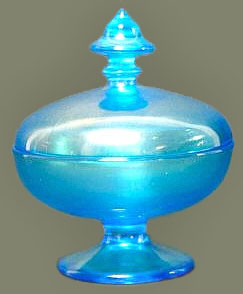 |
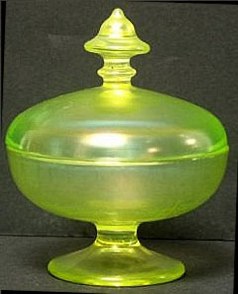 |
Miniature Puff Box in Celeste -
4 1/2 inches tall
|
Miniature PUFF BOX -
Vaseline
|
Many carnival glass collectors consider certain rather “pattern-less” examples which are iridized and colorful, having “stretch effect”, such as candlesticks, to be desirable. The stretch effect was achieved as a result of the glass being shaped after the iridized spray had been applied.
We have noted over the years in observing collectors habits: A plate, for instance, no matter the pattern, becomes more attractive to a buyer, when it offers a “stretch effect along the outer edges”. It lends more gleam to the eye of the beholder, usually presenting a willingness to pay more to own it.
One can dispute that this stretch glass is not carnival glass if you wish. However, this same bottom mold was used to create several shapes, as revealed in early ads from Fenton and Northwood books. Made from 1921 to possibly as late as 1927, it is pressed iridized pattern glass which comes in carnival colors, as well as iridized and non-iridized opaque colors. Call it whatever you will. It continues to be very collectible and desirable.
If you really care to “split the minute differences in these paneled bon bons, all designated No. 643, you will find them sitting side by side on page 184 of Harry Northwood The Wheeling Years by Heacock, Measell and Wiggins. Slight differences in height, thickness of stems and design of the finials is discussed. We shall leave the decisions to you, as to whether Diamond, Northwood, or Fenton made the ones we display. They all look pretty much alike to us, and when sitting as individual examples, you just might need to apply some identification stickers to help you remember which one is which? (smile)
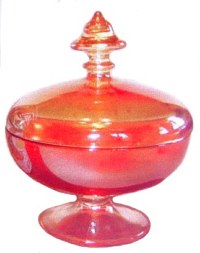 |
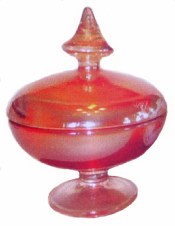 |
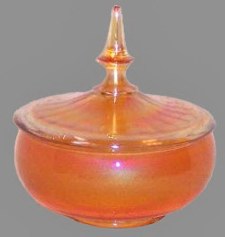 |
PUFF BOX -
larger has base
diam. of 2 1/8 in.
|
PUFF BOX -
smaller has base
diam. of 1 3/4 in.
|
Puff Box or Candy Dish -
5 in. across with an overall height of 5.5 in.
|
Alan and Lorraine Pickup have generously contributed to the San Diego Carnival Glass Club Newsletter for many years; proliferate and articulating as they are! The Oct. 2004 Newsletter carried a very unusual and interesting article concerning “two small Fenton jars referred to by most collectors as the Puff Jars.
The article continues to state that they have collected some forty jars in the larger size, Fenton's mould #643, discussed in the previous account.
Seems these Fenton Puff Jars are rather difficult to locate. The larger of these two is Fenton #57. It has the acorn shaped finial and a second ring of glass.
They have no clue as to the mould number for the smaller jar. The finial on this size is referred to as a pagoda shape. This small jar is the scarcer of the two, yet neither jar can be considered easy to locate!
No books have been written on this subject, to date, so just how many colors exist, remains unknown. They have three marigold jars in the larger #57 size, along with two in Celeste blue, one in Vaseline and one in Florentine green.
Their collection includes two marigold jars in the smaller size, one Celeste blue and a scarce Wisteria example. They continue to look for a Persian Pearl color, which they feel may exist in either size.
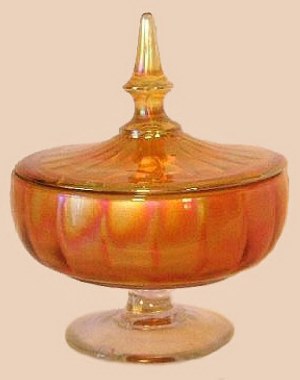 |
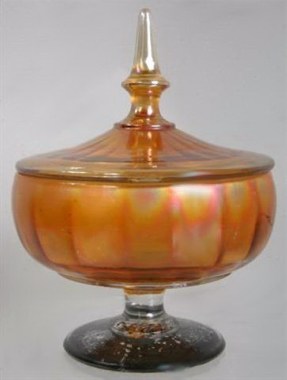 |
Fenton #735 Puff Box - Candy Box with clear base. Color is Grecian Gold.
6.5 in. tall x 5 in. diam.
|
Fenton #735 Puff or Candy
with black base - 1920's -
3.5 in. pedestal.
|
“COVERED CANDY JARS?”
Both of these covered bon-bon types are designated #735. They appear to be the same design, certainly. However, one seems to have a pearlized finish. Whether or not the owner would decide to use the containers for candy, jelly, or perhaps as a bath powder vessel, they surely were prevalent in many households through the 1930s - early 1940 period in time. Having begun life during those years, we can attest to their varied use.
It's probably safe to say that the container style came into being during the 1920s. Because of its versatility, many sizes and colors were produced.
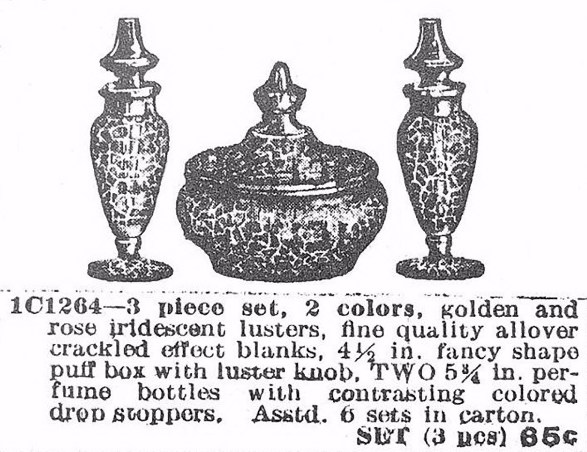 |
|
Puff Box and Colognes in Mid-Winter 1927 Butler Bros. Ad -
|
|
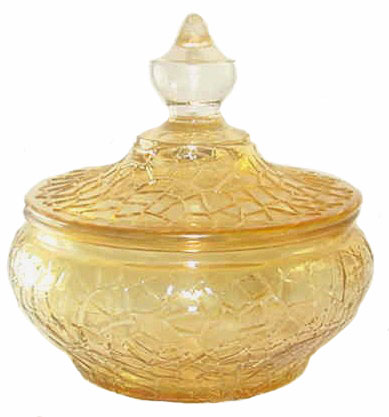 |
|
TREE 0f LIFE - CRACKLE Puff Box by McKee -
4 1/2 in. to top of finial and 4 1/2 in. diameter.
|
Diamond Glass Co. produced their version of these practical dressing table pieces during the “roaring twenties”. We have not seen this dish in other colors, but certainly there may be more out there. Having a collar base would make this box suitable for a jelly container as well.
Many articles have been, and continue to be written about this Tree of Life design found in several different shapes. Each writer has his or her reasons for believing that the pattern was produced by any given manufacturer, and that is all well and good. However, we suspect that as with any number of other designs found in carnival glass, there actually were more than one manufacturer over a period of years. Wholesale catalog ads prove that McKee produced the pattern, and leading on from the 20s into the 30s, Anchor Hocking and others may have followed suit. Patterns which translate into practical, everyday use indicate the distinct possibility that molds were sold and re-sold over long periods of time. Research states that McKee did no iridizing of their own, so perhaps many of the Tree of Life pieces were acquired by an after-market seller? Unanswered questions prevail in all phases of carnival glass.
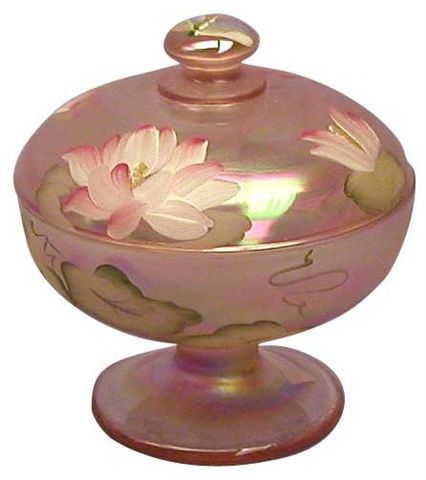
6 inch Sunset Covered Candy Box as advertised
in the Dec. 2004 Fenton catalog of products.
This hand-painted example of recent production enforces the thinking that old styles remain desirable. Although designated as a Candy Box by Fenton Glass, certainly it would look very pretty sitting in a bathroom with powder puff inside.
Dean & Diane Fry - 01/08
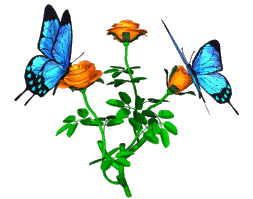   |
|
When we receive Christ as our Savior and Lord, the Holy Spirit indwells us and equips us to bless others. If we're prepared to pour out God's oil of helpfulness every day and everywhere, beginning at home, we'll minister Christ's beauty and the oil of joy to many hurting people.
PUTTING IT INTO PRACTICE
*Lend a listening ear.
*Pause to pray specifically.
*Speak a word of encouragement
The human spirit can gain new hope from an encouraging word.
Did not our heart burn within us while He talked with us on the road, and while He opened the Scriptures to us? (Luke 24:32)
An abundance of information can be dangerous.
Ideas tend to blur together and become incoherent, leaving us unchanged by what we know.
The centuries old historian Plutarch warned of the danger in living on a purely informational level. He wisely warned, “The mind is not a vessel to be filled, but a fire to be kindled.”
As we walk along the road of life,
We can sense that Jesus is there too;
As we read His Word and hear His voice
We will find He kindles fire anew. ~~ Hess
We can start a fire in another's heart when it is burning in our own.
|
|
   |
Should you care to contact the Frys, their email address is:
Search Carnival Glass 101
back to Carnival Glass 101
Our other sites you may enjoy:
Everything you EVER wanted to know about Indiana Glass
Great Reference for Newer Carnival Glass.
Complete Glassware Catalogs Available to Download
Questions? Comments? Suggestions? Broken Links? Corrections?
Your Friendly Webmaster is here to help!
